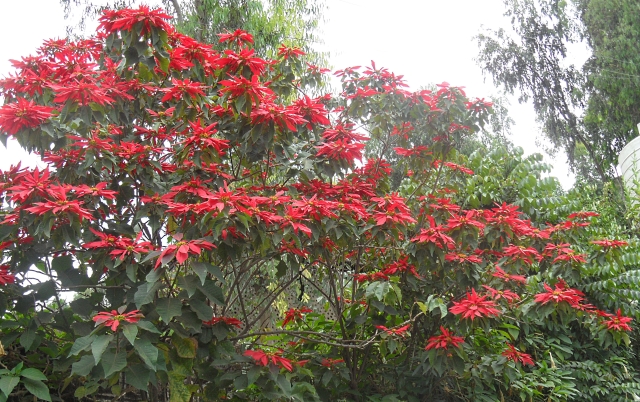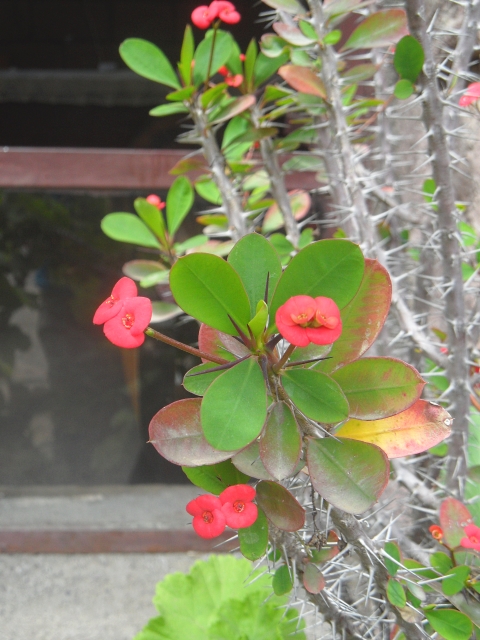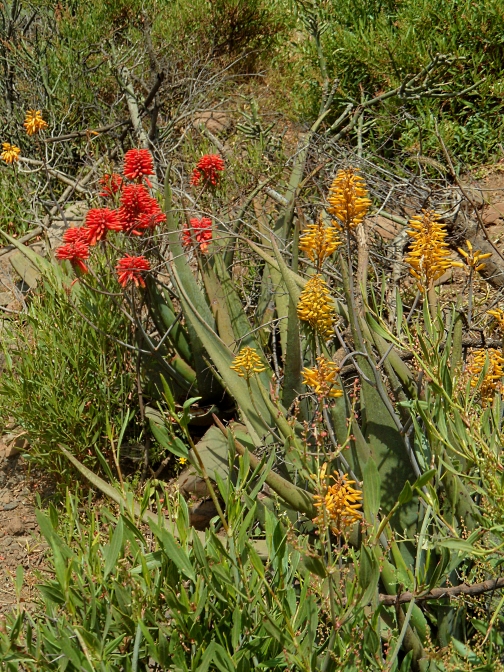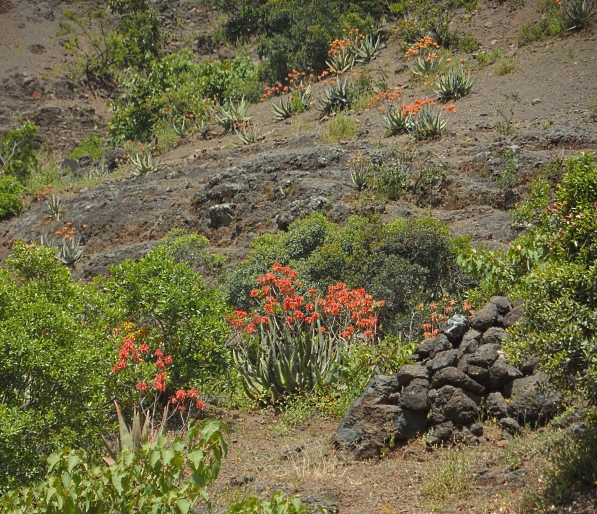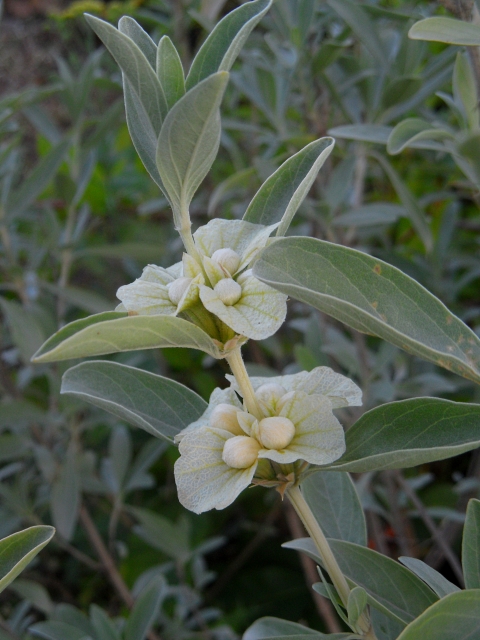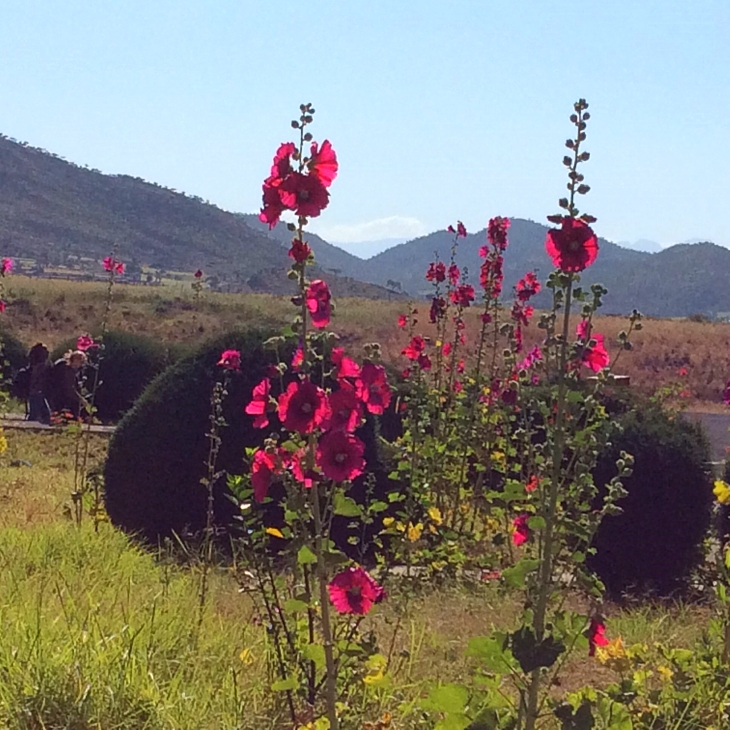
Hallo from Rabat, the capital city of Morocco. We are living here for a month whilst Andy studies Arabic, and we are living, as luck would have it, only a few minutes walk from the fabulous Botanical Gardens. Interestingly, they were founded by the Moroccan ruler at the time, with the support of the French Protectorate, just before World War One. The principal aim of the project was to scientifically examine the possibilities of growing different non- native plants to support agronomic research. Many decades later, the Gardens were re-classified as ‘botanical’ gardens as Rabat developed into the capital city that it is now.
And there is magnificent planting to be seen. The gardens are bounded by modern roads and divided into two halves by another major road. But the planting is so well placed and now much of it mature, that at the centre of each half, the traffic noise is only a hum, whilst the bird song is symphonic. The space really encourages the visitor, with generous comfortable seating placed everywhere, and of course, as much shade as possible from the pathside tree planting, and clever creation of newer paths that wind, as opposed to the straighter early 20th century paths which seem like boulevards by comparison. There are formal areas and many enchanting corners, as well as an entire re-imagined Jardin d’Andalous. I am waiting for a cloudier day to show you that.

On my four visits so far, I have been captivated by the simple but effective accompanying planting that is used in the garden. For example, the Butia above, is a thrilling golden shower of flowersprays at the moment, which draw the eye from the moment you enter the gardens. And it is underplanted with a block of short pale violet osteospermums and a low rosemary hedge, so effective and so simple.

In another part of the garden, this fabulous stand of Bismarkia nobilis flank the path. The fierce sunlight produces an effect as if the contrast button has been turned up, and you are confronted with full drama of light and shade.

The last time I saw the poinsettia plant in flower, Euphorbia pulcherrima, was in Ethiopia in October one year. But here in Morocco, the flower appears before the leaves, and at first from a distance, I thought it was an exotic bird that had popped onto the top of the tree. I actually have an irrational hatred of the Xmas potted poinsettia (never buy me one if you are a friend) but on trees, out in nature, it is a fabulous thing.

This shrub and small tree, Acalypha wilkesiana, was fortunately labelled, and is used as contrasting plant with the greens of other trees and shrubs. It is a flaming chestnut in the sun, with beautifully polished pink-rimmed toothed leaves, and I think I could adore it, were it not a native of the Pacific islands and therefore not likely to love South West France.

Here it is, doing it’s flaming best.

Rabat has had four days of heavy rain in the last 10 days, and the gardens, even in the brilliant sunshine, are looking very very happy.


The bougainvillea is just erupting, spurred on by the rain. I asked a gardener how old he thought the trees might be, and he suggested eighty years old, they could even date back to the original plantings between 1914-1919. The trunks wind and bind together, forming a giant bonsai structure, very impressive.


The immense tree Euphorbia, I think, above, is actually formed of four huge split stems, so the photograph above captures only one of those stems. It was almost magical to stand underneath and look up into the immense canopy.

Across the road, there is a spectacular cactus and succulent section. It took visiting Australia a few years back for me to latch onto exceptional dry landscape planting, including cactus and succulents. My eyes jsut couldn’t see the magic of them before that. It is the play of bright light and dark shade on fiercely strong structural shapes that gives this group of plants such majesty and drama.


These huge bulbous, beautifully pruned palms, below, with their dark stems create an atmosphere, I think, a bit like the grandeur of heavy Victorian furniture in a shuttered room. And yet, there is a friendly warmth in the shelter that they also provide.

Beatrix Farrand would have approved. Using ivy as a groundcover for avenues of trees, in her case English ivy, was a favourite planting combination in her early 20th century American gardens. The ivy here in Rabat, handles the dryness and the varying light levels well without, I imagine, getting above itself. The play of light and shade is constantly changing.

And here’s another favourite plant, Farfugium japonicum, doing the groundcover job. This encourages me to think that I could give it a try in the Barn Garden, which must be damper in the hot months than Rabat, even with irrigation.

